Atrium OCEAN
Water Seal Chest Drain
• Set up
Step 1. Fill water seal to 2 cm line
Hold funnel down and fill to the top. Raise funnel to
empty water into water seal to 2 cm line.
Step 2. Fill suction control to desired pressure level(A)
Remove the tethered vent plug, pour water, and
replace vent plug.
Step 3. Connect chest drain to patient
Connect chest drain to patient prior to initiating suction.
Step 4. Connect chest drain to suction
To apply suction, connect suction source line directly
to the suction control stopcock or suction connector
provided. Adjust the suction control stopcock or
suction control source as needed to increase or
decrease suction control bubbling.
Have a question or need help in a hurry?
Call Maquet toll free at 1-800-528-7486.
What to check during system operation
• Suction control stopcock
The suction control stopcock regulates vacuum to the
chest drain. It provides effective control of suction control
bubbling and allows efficient use with any unregulated
suction source. The stopcock must be ON for initial system
set up and should not be turned OFF during patient use.
During patient transport or when suction is not
operating, it is not recommended to turn the stopcock
off or to clamp off suction tube.
• Verifying system operation
Water seal and suction control chambers must be filled
and maintained to prescribed levels to ensure proper
operation and should be checked regularly when used for
extended periods. Water seal should be maintained at 2
cm line and suction control chamber should bubble gently
when connected to suction. Adjust stopcock or suction
source as needed to increase or decrease suction control
bubbling. As required, additional water may be added by
a 19 gauge or smaller needle and syringe via the grommet
located on the back.
• Placement of unit
Always place chest drain below the patient’s chest in an
upright position. To avoid accidental knock-over, open
the floor stand for secure placement on floor or hang the
system bedside with the hangers provided.
• Recording drainage volume
The collection chamber incorporates a writing surface with
easy-to-read fluid level graduations. Please refer to indivi-
dual product inserts for specific model graduations.
• Observing water seal for patient air leaks
When air bubbles are observed going from right to left in
the air leak monitor, this will confirm a patient air leak.
Continuous
bubbling in the
water seal air leak
monitor will confirm a
persistent air leak.
Intermittent
bubbling with float
ball oscillation will
confirm the presence of an intermittent air leak.
No bubbling with minimal float ball oscillation at bottom of
water seal will indicate no air leak is present.
• Graduated air leak monitor
For those models with a graduated air leak monitor, air leak
bubbling can range from 1 (low) to 5 (high). Air bubbles
create an easy to follow air leak pattern for monitoring
patient air leak trends.
• Observing graduated water seal column for changes
in patient pressure
Patient pressure can be determined by observing the
level of the blue water
and small float ball in the
graduated water seal
column. With suction
operating, patient
pressure will equal the
suction control setting
plus the graduated water
seal column level only.
For gravity drainage (no
suction) patient pressure will equal the graduated water seal
column level only.
• High negativity float valve
The high negativity float valve,
with its controlled release action,
enables the thoracic patient to draw
as much intrathoracic pressure as
is required during each respiratory
cycle. During prolonged episodes
of extreme negative pressure, the
controlled release system will auto-
matically relieve excess vacuum to
a lower pressure level.
• Manual high negativity vent
To lower the height of the water seal column or to lower
patient pressure when connected to suction, depress the
manual vent located on top of the drain until the float valve
releases and the water column returns to the desired level.
Do not use manual
vent to lower water
seal column when suc-
tion is not operating or
when the patient is on
gravity drainage.
• To prescribe suction pressure greater than -20 cmH
2
0
Suction pressure greater than -20 cmH
2
O can be imposed
directly by a graduated wall regulator or portable pump
by taping over the vent-plug with non-porous tape and
reading vacuum pressure directly from regulator or pump.
Vacuum pressures greater than -40 mmHg are not
recommended.
• Sampling patient drainage
Sampling of patient drainage must be in accordance with
approved hospital infection control standards. Selected
models include a needleless Luer port on the patient tube
connector for sampling patient drainage. Alcohol swab the
Luer port prior to syringe attachment (no needle). Fluid
samples can also be taken directly from the patient tube
by forming a temporary dependent loop and inserting a
19 gauge needle at an oblique angle. Alcohol swab the
patient tube prior to inserting syringe at a shallow angle.
Do not puncture patient tube with an 18 gauge or larger
needle.
• Positive pressure protection
The positive pressure release valve, located on top of
drain, opens to release accumulated positive pressure. Do
not obstruct the positive pressure release valve.
• System disconnection
For models equipped with an in-line connector, close
patient tube clamp prior to dis connecting chest drain
patient tube from patient. Clamp off all indwelling thoracic
catheters prior to disconnecting chest drain from patient.
• System disposal
Disposal of chest drain and its contents should be in
accordance with all applicable regulations.
OFF
ON
Do not vent when suction Is not operating
A Suction Control Chamber
B Water Seal Chamber
C Air Leak Monitor
D Collection Chamber
E Easy-to-Grip Handle
F Positive Pressure Release Valve
G Manual High Negativity Vent
H Multi-position Hangers
I In-line Connector
J Needleless Access Port
K Patient Pressure Float Ball
L Swing Out Floor Stand
M Patient Tube Clamp
N Patient Connector
F
G
E
I
J
H
A
B
D
C
N
M
L
K
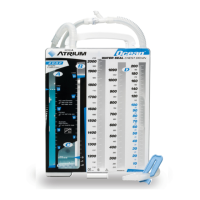
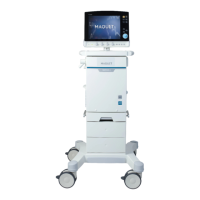

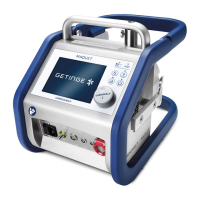
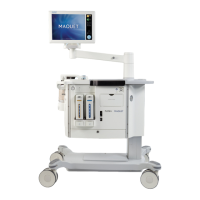


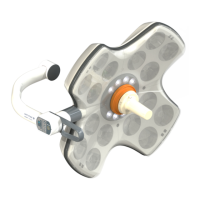
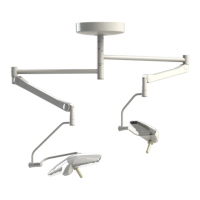


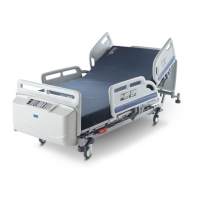

